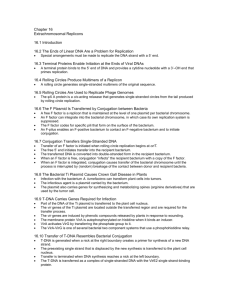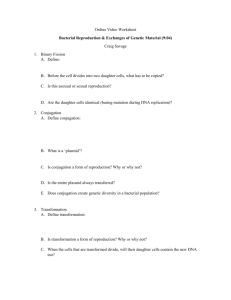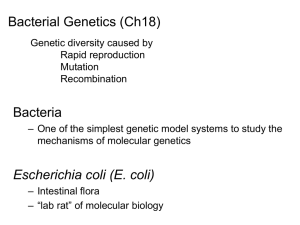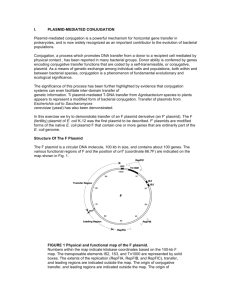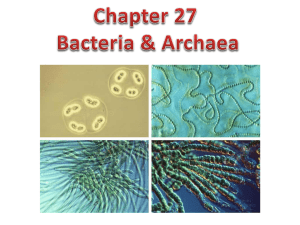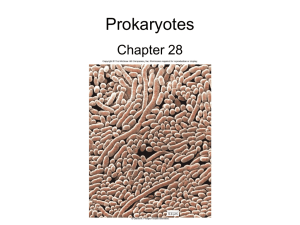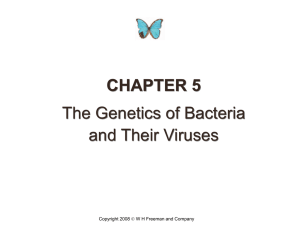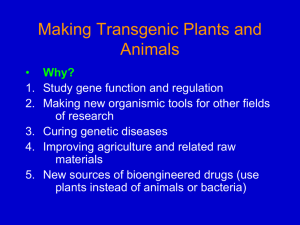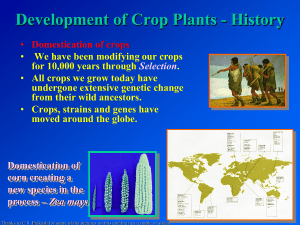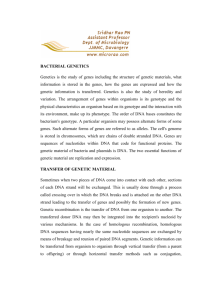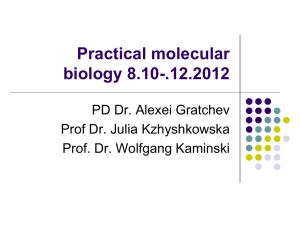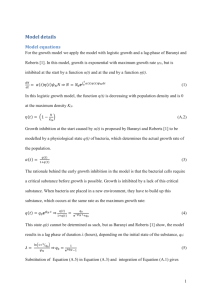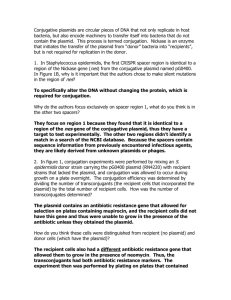Outlines_Ch16
advertisement
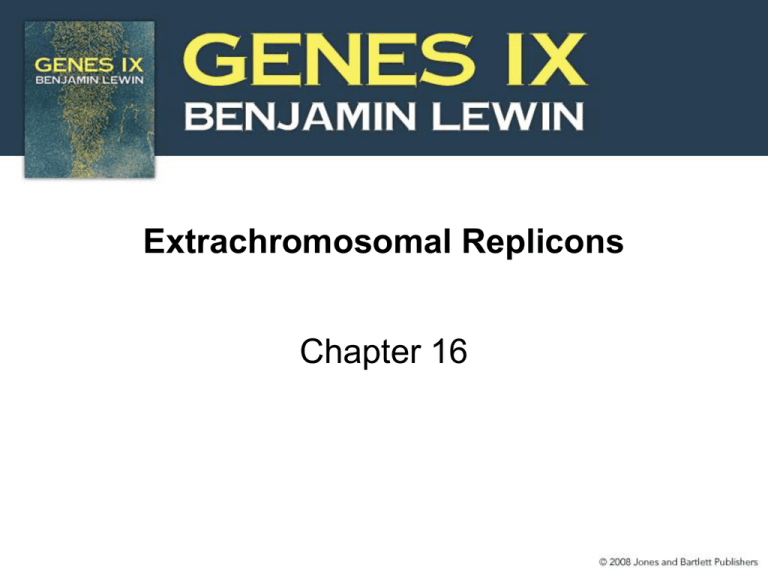
Extrachromosomal Replicons Chapter 16 16.2 The Ends of Linear DNA Are a Problem for Replication • Special arrangements must be made to replicate the DNA strand with a 5′ end. 2 Figure 16.1 16.3 Terminal Proteins Enable Initiation at the Ends of Viral DNAs • A terminal protein: – binds to the 5′ end of DNA – provides a cytidine nucleotide with a 3′–OH end that primes replication 3 Figure 16.4 16.4 Rolling Circles Produce Multimers of a Replicon • A rolling circle generates singlestranded multimers of the original sequence. 4 Figure 16.5 16.5 Rolling Circles Are Used to Replicate Phage Genomes • The ϕX A protein is a cisacting relaxase. – It generates single-stranded circles from the tail produced by rolling circle replication. 5 Figure 16.8 16.6 The F Plasmid Is Transferred by Conjugation between Bacteria • A free F factor is a replicon that is maintained at the level of one plasmid per bacterial chromosome. • An F factor can integrate into the bacterial chromosome – Its own replication system is suppressed. • The F factor codes for specific pili that form on the surface of the bacterium. 6 Figure 16.9 • An F-pilus enables an F-positive bacterium to: – contact an F-negative bacterium – initiate conjugation 7 Figure 16.10 16.7 Conjugation Transfers Single-Stranded DNA • Transfer of an F factor is initiated when rolling circle replication begins at oriT. • The free 5′ end initiates transfer into the recipient bacterium. • The transferred DNA is converted into double-stranded form in the recipient bacterium. 8 Figure 16.11 • When an F factor is free, conjugation “infects” the recipient bacterium with a copy of the F factor. • When an F factor is integrated, conjugation causes transfer of the bacterial chromosome. – Transfer continues until the process is interrupted by (random) breakage of the contact between donor and recipient bacteria. 9 Figure 16.12 16.8 The Bacterial Ti Plasmid Causes Crown Gall Disease in Plants • Infection with the bacterium A. tumefaciens can transform plant cells into tumors. • The infectious agent is a plasmid carried by the bacterium. 10 Figure 16.13 • The plasmid also carries genes for synthesizing and metabolizing opines (arginine derivatives) – They are used by the tumor cell. 11 Figure 16.14 16.9 T-DNA Carries Genes Required for Infection • Part of the DNA of the Ti plasmid is transferred to the plant cell nucleus. 12 Figure 16.15 • The vir genes of the Ti plasmid are: – located outside the transferred region – required for the transfer process Figure 16.17 13 • The vir genes are induced by phenolic compounds released by plants in response to wounding. Figure 16.18 14 • The membrane protein VirA is autophosphorylated on histidine when it binds an inducer. • VirA activates VirG by transferring the phosphate group to it. • The VirA-VirG is one of several bacterial two component systems that use a phosphohistidine relay. 15 Figure 16.19 16.10 Transfer of T-DNA Resembles Bacterial Conjugation • T-DNA is generated when a nick at the right boundary creates a primer for synthesis of a new DNA strand. • The preexisting single strand that is displaced by the new synthesis is transferred to the plant cell nucleus. • Transfer is terminated when DNA synthesis reaches a nick at the left boundary. 16 • The T-DNA is transferred as a complex of single-stranded DNA with the VirE2 single strand-binding protein. • The single stranded T-DNA is: – converted into double stranded DNA – integrated into the plant genome • The mechanism of integration is not known. – T-DNA can be used to transfer genes into a plant nucleus. 17
